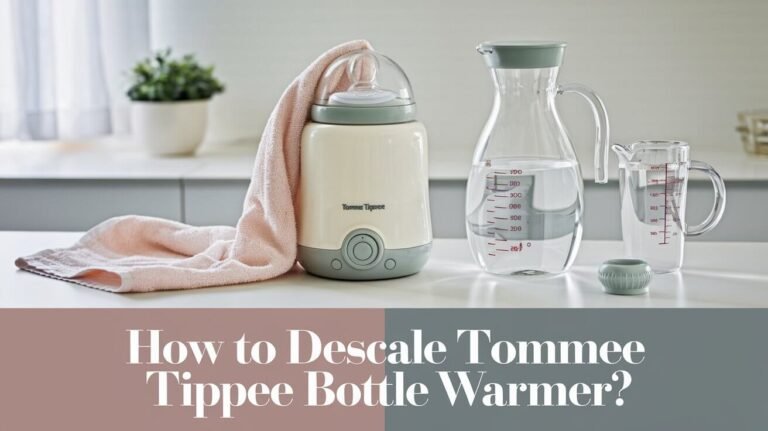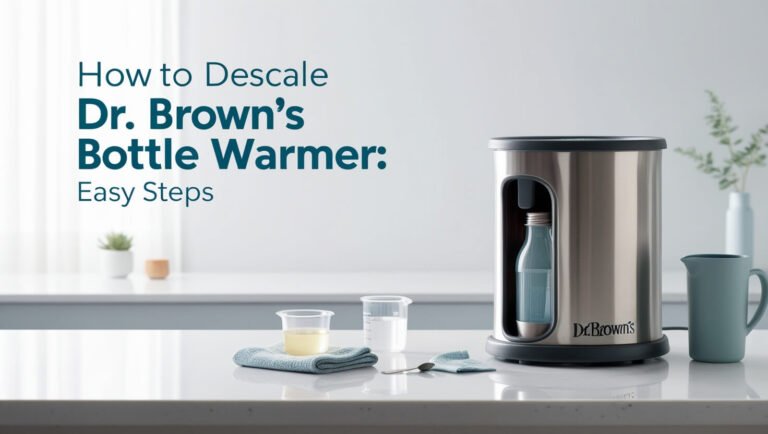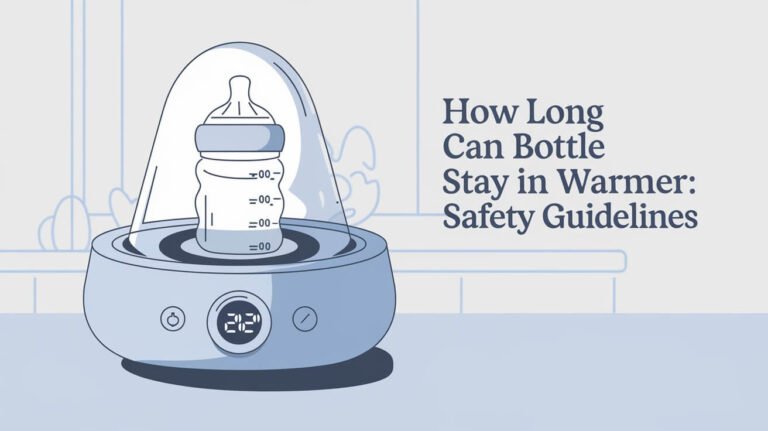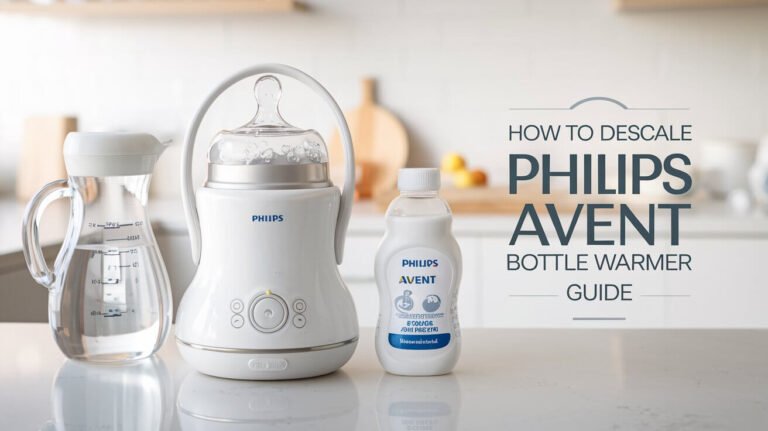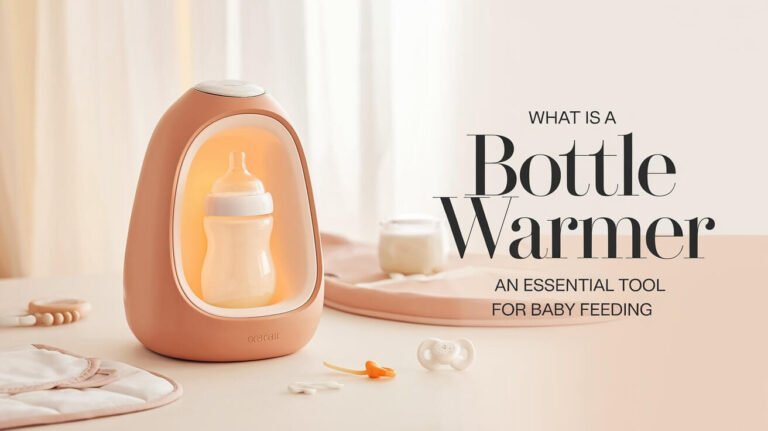How Long Does a Bottle Warmer Take to Heat a Bottle?
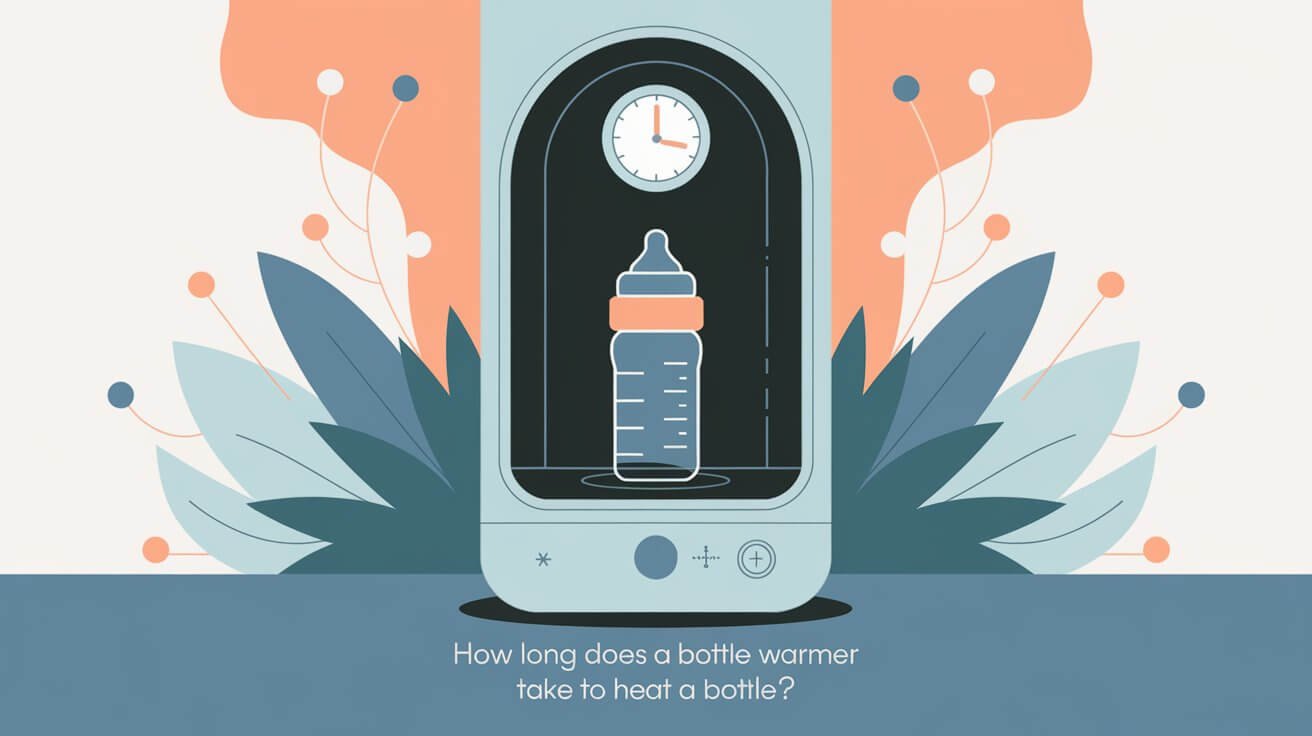
As a parent, time is precious, and feeding your baby is no exception. A bottle warmer can be a game-changer, warming milk or formula fast and efficiently. But how long does it take to get the job done? Let’s dive into the answer.
Types of Bottle Warmers
There are three main types of bottle warmers: steam-based, water bath, and portable travel warmers. Each has its own benefits and features. They cater to the needs of busy parents.
Steam-Based Warmers
Steam-based bottle warmers use steam to heat bottles quickly and evenly. This helps keep nutrients and flavors in breast milk or formula. They can warm a bottle in just 3 to 12 minutes, perfect for busy mornings or late nights.
Water Bath Warmers
Water bath bottle warmers heat bottles slowly and gently. They might take 4 to 8.5 minutes, but they offer consistent and controlled heating. This is great for warming sensitive breast milk or ensuring the bottle is evenly warm.
Portable Travel Warmers
Portable travel bottle warmers are great for parents always on the move. They are small, insulated, and keep bottles warm. They often run on batteries or a car adapter, making them perfect for car trips, visits, or outings.
When choosing a bottle warmer, think about heating time, temperature control, and safety. Knowing the different types helps you pick the best one for your family. This ensures your baby’s bottles are always just right.
How Long Does a Bottle Warmer Take
The time it takes to heat a bottle with a bottle warmer varies. It depends on the model and its features. For example, the Papablic Ultra-fast can heat 4 oz/120 ml of breastmilk to 99°F in just 2 minutes. This is great for parents who are always on the go.
Many bottle warmers also have a steady warming mode. This keeps the milk at a consistent temperature for up to 24 hours. It’s perfect for nighttime feedings, keeping the milk warm without it getting too cold.
Bottle warmers come with safety features too. They have auto-off functions and alarms that sound when the bottle is ready. These features prevent overheating and ensure the milk is just right for your baby.
Most bottle warmers work with many bottle brands. This includes Philips Avent and Comotomo. But, some bottles like Nanobebe and Tommee Tippee might not be compatible.
The warming time can be affected by a few things. The bottle’s volume, the milk’s starting temperature, and the bottle material all play a role. But, using a bottle warmer is safer and more efficient than microwaves or hot water baths.
Room Temperature Milk Warming Times
Warming up room temperature milk takes different times based on how much you have. Babies who switch from breast to bottle like their milk around 98.6°F or 37°C. This temperature is most comforting for them.
Small Volume (1-4 oz) Heating Duration
For 1-4 ounces of milk, it takes about 3-4.15 minutes to warm it up. This ensures the milk is just right without losing nutrients.
Medium Volume (5-8 oz) Heating Duration
Warming 5-8 ounces of milk takes 3-6 minutes. This longer time is needed for the extra milk to get to the perfect temperature.
Large Volume (9-11 oz) Heating Duration
For 9-11 ounces of milk, it takes 5-6.30 minutes to warm it up. This longer time is needed for the extra milk to get to the perfect temperature.
These times are for a Philips Avent fast bottle warmer. Times might vary with other models or bottle types. Keeping the milk at the right temperature is key to keep nutrients and make feeding comfortable for your baby.
| Milk Volume | Heating Duration |
|---|---|
| Small (1-4 oz) | 3-4.15 minutes |
| Medium (5-8 oz) | 3-6 minutes |
| Large (9-11 oz) | 5-6.30 minutes |
Cold Milk Warming Duration Guide
Warming up cold milk for your baby can take different times. This depends on how much milk you have and the bottle warmer you use. If you have a Philips Avent fast bottle warmer, here’s a quick guide:
- 1 oz of cold milk (5°C/41°F) takes 4-4.15 minutes to warm up
- 2-4 oz of cold milk takes 4.45-6 minutes to warm up
- 5-8 oz of cold milk takes 5.30-7.30 minutes to warm up
- 9-11 oz of cold milk takes 6.30-8 minutes to warm up
The times for warming cold milk are longer than for room temperature milk. This is because cold milk needs more time to heat up. But, the bottle warmer efficiency makes sure your baby’s milk is just right. It keeps the important nutrients safe.
| Milk Volume | Warming Time (Cold Milk) | Warming Time (Room Temperature) |
|---|---|---|
| 1 oz | 4-4.15 minutes | 2-2.15 minutes |
| 2-4 oz | 4.45-6 minutes | 3-3.45 minutes |
| 5-8 oz | 5.30-7.30 minutes | 4-5 minutes |
| 9-11 oz | 6.30-8 minutes | 5-6 minutes |
Knowing these cold milk warming times helps you get your baby’s bottle just right. It works for both cold and room temperature milk.
Frozen Milk Defrosting Times
Thawing frozen breast milk is a task many parents face. Luckily, a bottle warmer can speed up this process. Studies show frozen milk defrosts in about 6 minutes with a bottle warmer’s “keep warm/defrost” setting.
Small Quantities Defrost Times
For 1-3 ounces of frozen milk, thawing takes 20 to 40 minutes. This method keeps the milk’s nutrients intact. It’s perfect for parents looking to thaw quickly and safely.
Large Quantities Defrost Times
- Thawing 4-6 ounces of frozen milk takes 45 to 65 minutes with a bottle warmer.
- Always use the “defrost” setting on your bottle warmer. It ensures even thawing and keeps the milk’s nutritional value.
Compared to other methods, a bottle warmer is faster. It beats refrigerator thawing (up to 12 hours) and warm water baths (20 minutes).
It’s important to use thawed breast milk within 24 hours. This keeps it fresh and safe for your baby. With a good bottle warmer, you can give your baby the best from frozen breast milk.
Bottle Material Impact on Heating Time
The material of a baby bottle affects how fast it warms up. Glass bottles, for example, heat up quicker than plastic or silicone ones. This is important for keeping your baby’s food at the right temperature and safe.
The Philips Avent Natural polypropylene bottle is often used as a comparison. While it’s easy to carry and light, it might not warm up as fast as glass. Silicone bottles are tough and bendy but might take a bit longer to get warm.
| Bottle Material | Heating Time | Maintaining Temperature |
|---|---|---|
| Glass | 3-5 minutes | 20-30 minutes |
| Stainless Steel | 5-7 minutes | Up to 45 minutes |
| Plastic | 2-3 minutes | 10-15 minutes |
The highest safe temperature for warming bottles is about 85°C (185°F). It’s also advised not to warm milk or food for over 30 minutes. This helps keep the nutrients and safety of the food.
“Bottle-fed infants worldwide may consume more than 1.5 million particles of microplastics per day on average, highlighting the importance of understanding the impact of bottle material on heating times and possible microplastic release.”
Knowing the heating time based on the bottle material helps parents keep their baby’s meals safe and nutritious. Taking care of the bottle, like descaling it regularly, also helps with faster and more consistent warming.
Temperature Settings and Safety Features
Safety features like automatic shut-off and temperature control are key in bottle warmers. They help keep the milk or formula warm and full of nutrients.
Automatic Shut-off Function
Many bottle warmers, like the Fast™ Bottle Warmer & Sterilizer, have an automatic shut-off. This stops the warmer from getting too hot. Too much heat can ruin the quality of the milk or formula.
Heating breastmilk too high can lose up to 50% of its good enzymes in just one minute. This happens when it gets over 131°F (55°C).
Temperature Control Options
- Bottle warmers let you choose the right warming level. This depends on how much milk or formula you have and its starting temperature.
- The best temperature for breast milk is around 98.6°F (37°C), or less. Heating it too high can damage its enzymes, nutrients, and antibodies.
- Keeping the right temperature is important. Babies like their milk warm, like their body. Bottle warmers heat it up fast and evenly, keeping it nutritious.
These safety features and temperature controls make bottle warmers safe and effective. They let parents feed their babies with confidence.
Nighttime Feeding Solutions
Speed and convenience are key during nighttime feedings. For busy parents, a fast bottle warmer is a lifesaver. The Fast™ Bottle Warmer & Sterilizer warms bottles in just 60 seconds.
This quick warming makes late-night feedings easier. The one-touch start and ready alert features make it simple. Parents can quickly care for their baby without waking them up.
Keeping milk at the right temperature is important. It should be given to the baby within 2 hours of warming. This keeps its nutrients and quality good.
The Fast™ Bottle Warmer & Sterilizer is a top choice for nighttime bottle warming. It’s affordable at just $20.75. It’s a quick bottle warming solution for parents.
Common Heating Time Variables
Several factors can affect how long it takes to warm up a bottle. Knowing these can help parents warm their baby’s milk safely and efficiently.
The milk’s starting temperature is key. Milk at room temperature warms up quicker than cold milk. Also, the amount of milk matters. More milk takes longer to heat than less.
The bottle’s material also plays a part. Glass bottles warm up faster than plastic or silicone ones. This is because glass and plastic/silicone have different heat properties.
The type of warmer used is also important. Steam-based warmers are quicker than water bath warmers. This is because steam warmers heat faster than water bath warmers.
| Factor | Impact on Heating Time |
|---|---|
| Initial Milk Temperature | Room-temperature milk heats faster than refrigerated milk |
| Milk Volume | Larger volumes take longer to heat evenly |
| Bottle Material | Glass bottles heat up faster than plastic or silicone |
| Warmer Type | Steam-based warmers are generally faster than water bath warmers |
Knowing about bottle warmer efficiency and heating time factors helps parents. It ensures the baby’s milk is always at the right temperature.
Steam Sterilization Duration
Steam sterilization is a great way to keep your baby’s feeding stuff clean. Many bottle warmers, like the Chicco Digital Bottle Warmer & Sterilizer, have a built-in steam feature. This feature kills 99.9% of harmful bacteria.
Small Parts Sterilization Time
Smaller items like nipples and pacifiers get sterilized fast with steam. The Chicco Digital Bottle Warmer & Sterilizer can do this in just 5 minutes. It keeps these items germ-free for up to 24 hours if the lid stays closed.
Full Bottle Sterilization Time
Full bottles take a bit longer to sterilize, but it’s worth it. The time it takes varies by bottle warmer model. But, it’s usually quick and effective.
Always follow the maker’s instructions for the best results. This ensures the steam sterilization works well and safely. With the right equipment, you can be sure your baby’s bottles are clean and ready.
Let’s Complete
Bottle warmers are a big help for busy parents. They make warming milk fast and easy. You can warm room temperature milk in just 3-8 minutes or defrost frozen milk quickly.
These devices come with features like automatic shut-off and temperature control. This means your baby’s milk is always safe and warm. Some even sterilize bottles for extra convenience.
Whether you need to warm a small or large bottle, bottle warmers can do it. Some models warm milk in just 60 seconds. This makes feeding time quick and easy.
These products focus on bottle warmer efficiency and quick bottle warming. They are a must-have for today’s parents.
Having a reliable bottle warmer can change your parenting game. It makes warming milk easy and stress-free. With the right warmer, you can focus on bonding with your baby.
frequently asked questions:
How long does a bottle warmer take to heat milk?
The time it takes to warm milk varies. It depends on the milk’s volume, its starting temperature, and the bottle’s material. The Philips Avent fast bottle warmer can heat milk in just 60 seconds. Most bottle warmers take between 3-8 minutes.
What are the different types of bottle warmers?
There are three main types of bottle warmers. Steam-based warmers use steam to heat bottles quickly and evenly. They preserve nutrients and avoid hot spots. Water bath warmers use warm water to heat bottles gradually. Portable travel warmers are for on-the-go use and keep bottles warm using insulation.
How long does it take to heat room temperature milk in a bottle warmer?
For room temperature milk, the Philips Avent fast bottle warmer’s times are: Small volumes (1-4 oz) take 3-4.15 minutes. Medium volumes (5-8 oz) take 3-6 minutes. Large volumes (9-11 oz) take 5-6.30 minutes. Times may vary with different models or bottle materials.
How long does it take to heat cold milk in a bottle warmer?
For cold milk, the Philips Avent fast bottle warmer’s times are: 1 oz takes 4-4.15 minutes. 2-4 oz takes 4.45-6 minutes. 5-8 oz takes 5.30-7.30 minutes. 9-11 oz takes 6.30-8 minutes. These times are longer because of the colder initial temperature.
How long does it take to defrost frozen milk in a bottle warmer?
For frozen milk, the Philips Avent fast bottle warmer’s times are: Small quantities (1-3 oz) take 20-40 minutes. Large quantities (4-6 oz) take 45-65 minutes. Always use the defrost setting for frozen milk to thaw safely and evenly.
How does bottle material affect warming time?
Bottle material affects warming time. Glass bottles heat faster than plastic or silicone ones. The Philips Avent Natural polypropylene bottle is used as a baseline. Glass bottles may heat quicker, while silicone bottles may take longer.
What safety features do bottle warmers have?
Many bottle warmers, like the Fast™ Bottle Warmer & Sterilizer, have automatic shut-off to prevent overheating. They offer temperature control options for different milk volumes and temperatures. These features ensure safe and consistent warming, preserving nutrients in breast milk or formula.
How quickly can a bottle warmer heat a bottle for nighttime feedings?
Fast bottle warmers, like the Fast™ Bottle Warmer & Sterilizer, can warm bottles in 60 seconds. This quick heating makes nighttime feedings easier for parents. The one-touch start and ready alert features also simplify the process at night.

